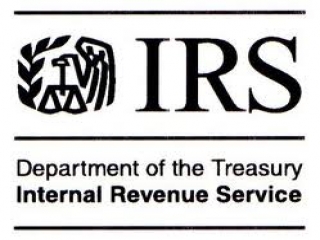 |
IRS Releases New Tax Gap Estimates; Compliance Rates Remain Statistically Unchanged From Previous Study
Source:
irs.gov
- Jan 9, 2012
R-2012-4, Jan. 6, 2012
WASHINGTON — The Internal Revenue Service today released a new set of tax gap estimates for tax year 2006. The tax gap is defined as the amount of tax liability faced by taxpayers that is not paid on time.
The new tax gap estimate represents the first full update of the report in five years, and it shows the nation’s compliance rate is essentially unchanged from the last review covering tax year 2001.
The tax gap statistic is a helpful guide to the scale of tax compliance and to the persisting sources of low compliance, but it is not an adequate guide to year-to-year changes in IRS programs or to year-to-year returns on IRS service and enforcement initiatives.
The following table summarizes the new estimates being released today, as compared to the 2001 estimates, along with the total tax liabilities in each year.
......................Tax Year 2001.............Tax Year 2006
.........................(billions)................(billions)
Total Tax Liabilities.........$2,112................$2,660
Gross Tax Gap.................$345..................$450
.....................(83.7% compliance)....(83.1% compliance)
Enforcement and Late Payments $55..................$65
Net Tax Gap....................$290.................$385
.....................(86.3% compliance)....(85.5% compliance)
The voluntary compliance rate — the percentage of total tax revenues paid on a timely basis — for tax year 2006 is estimated to be 83.1 percent. The voluntary compliance rate for 2006 is statistically unchanged from the most recent prior estimate of 83.7 percent calculated for tax year 2001.
On a relative basis, the tax gap is largely in line with the growth in total tax liabilities. In addition, some growth in the tax gap estimate is attributed to better data and improved estimation methods. For example, the IRS developed a new econometric model for estimating the tax gap attributable to small corporations which was then applied to newer operational data. Also, large corporation tax gap estimates for 2006 are based on improved statistical methods and updated data. Finally, the data related to individual income taxpayers continues to improve based on improved estimation techniques and newer data.
The tax gap can be divided into three components: non-filing, underreporting and underpayment.
As was the case in 2001, the underreporting of income remained the biggest contributing factor to the tax gap in 2006. Under-reporting across taxpayer categories accounted for an estimated $376 billion of the gross tax gap in 2006, up from $285 billion in 2001. Tax non-filing accounted for $28 billion in 2006, up from $27 billion in 2001. Underpayment of tax increased to $46 billion, up from $33 billion in the previous study.
Overall, compliance is highest where there is third-party information reporting and/or withholding. For example, most wages and salaries are reported by employers to the IRS on Forms W-2 and are subject to withholding. As a result, a net of only 1 percent of wage and salary income was misreported. But amounts subject to little or no information reporting had a 56 percent net misreporting rate in 2006.
Category: IRS
|

